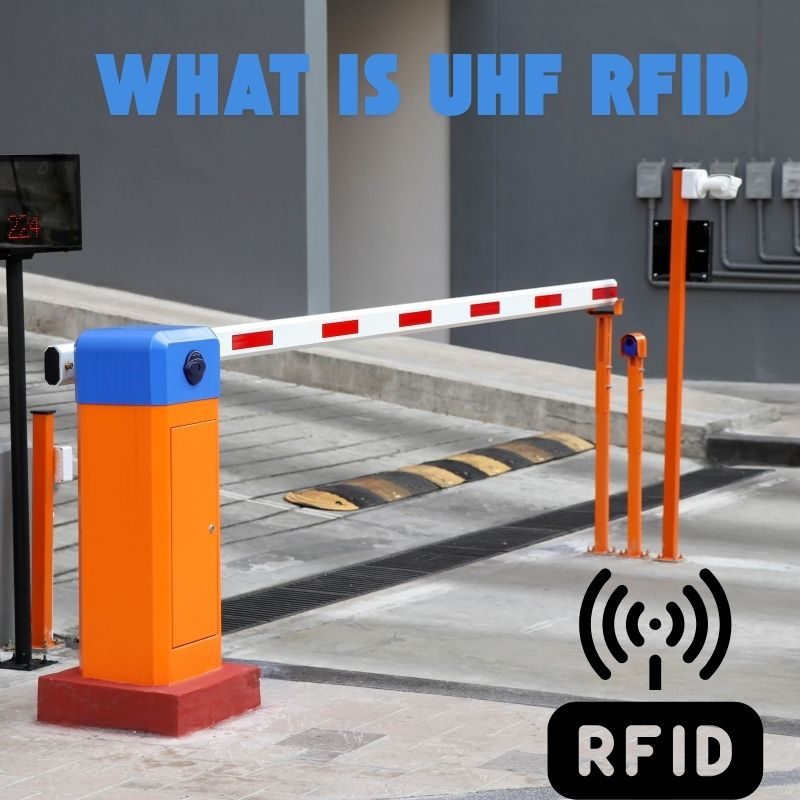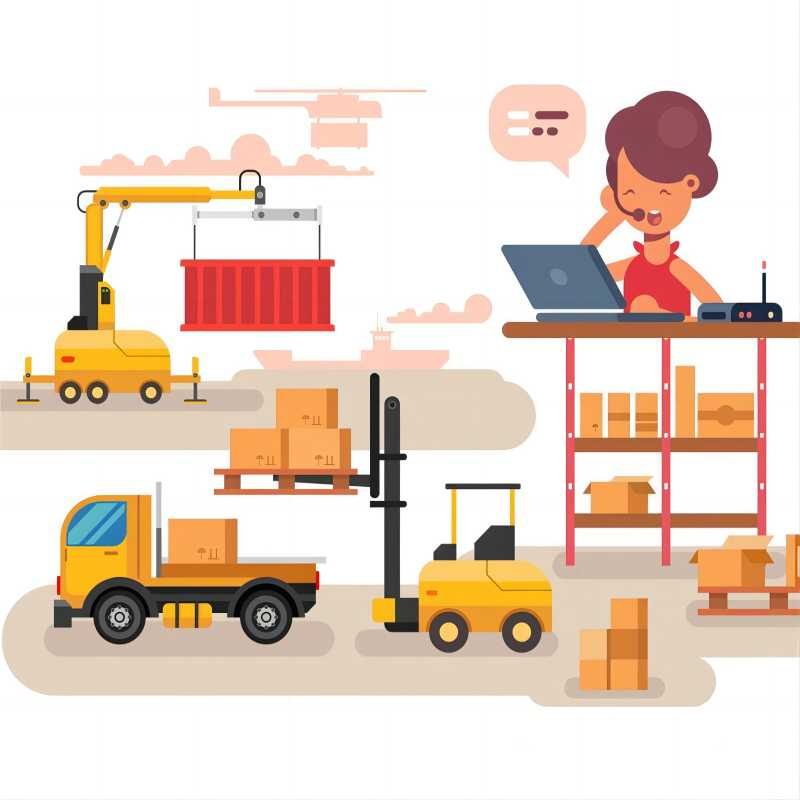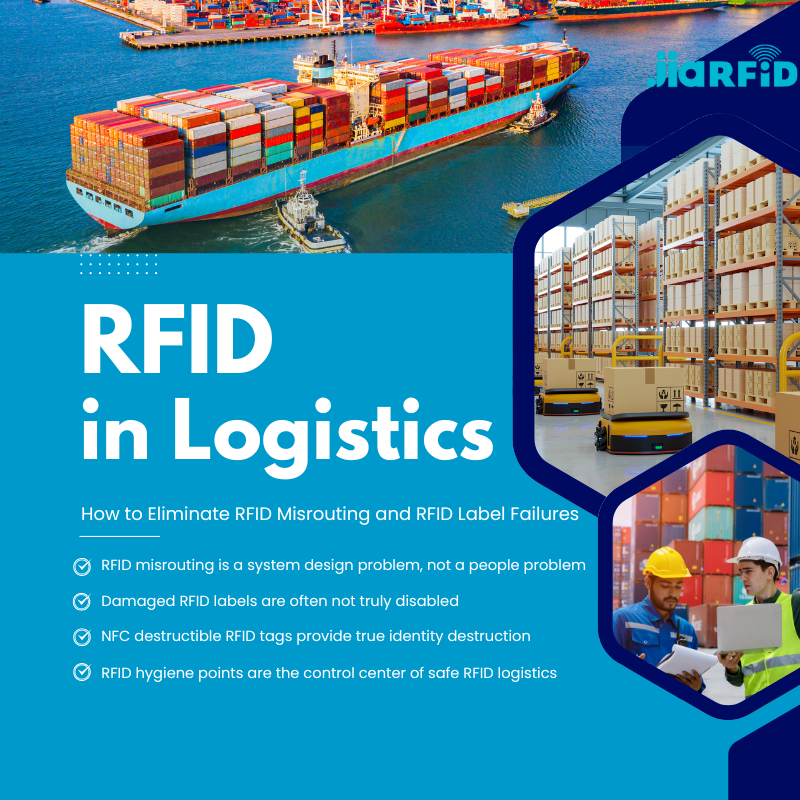
O que é UHF RFID?
Índice
Introdução
UHF RFID (Identificação por radiofrequência de ultra-alta frequência) é uma tecnologia de identificação de ponta que está a ganhar força em vários setores. Do retalho e logística à saúde e agricultura, a sua capacidade de permitir a troca rápida e sem contacto de dados está a transformar a forma como as empresas operam.
Quer esteja a explorar a RFID pela primeira vez ou pretenda aprofundar os seus conhecimentos, este guia irá orientá-lo sobre o que é UHF RFID é, como funciona, as suas aplicações e por que é uma tecnologia imprescindível em 2025.

O que é UHF RFID?
UHF RFID, abreviação de Identificação por Radiofrequência de Ultra-Alta Frequência, é uma tecnologia de comunicação sem fios que utiliza ondas de rádio para identificar e rastrear etiquetas fixadas em objetos. É uma das três principais categorias de frequência na tecnologia RFID — as outras duas são Baixa Frequência (LF) e Alta Frequência (HF).
A UHF opera normalmente na faixa de 860 MHz a 960 MHz e é bem conhecida por:
- Maiores alcances de leitura (até 12 metros ou mais)
- Transmissão de dados mais rápida
- Capacidade de leitura em massa
Em termos mais simples, o RFID UHF é como um “código de barras digital turbinado” — não é necessária linha de visão e centenas de itens podem ser lidos instantaneamente.
Como funciona o UHF RFID?
Para entender como funciona a RFID UHF, vamos examinar os seus componentes principais:
- Etiquetas RFID: Contêm um microchip e uma antena que armazenam dados.
- Leitores RFID: Emite ondas de rádio e recebe dados de etiquetas.
- Antenas: Aumente o sinal entre as etiquetas e os leitores.
- Middleware/Software: Processa e gere os dados recolhidos.
Existem dois tipos principais de Etiquetas RFID UHF:
- Etiquetas UHF passivas: Depende da energia do sinal do leitor; mais barato e comumente utilizado.
- Etiquetas UHF ativas: Alimentado por bateria; adequado para aplicações de longo alcance e em tempo real.
Funcionalidade principal:
- O leitor emite um sinal na banda UHF.
- A etiqueta recebe energia, liga-se e envia os seus dados de volta.
- O leitor recolhe esses dados e os envia para um sistema backend para processamento.
O sistema pode ler várias etiquetas simultaneamente, mesmo em altas velocidades — tornando o RFID UHF ideal para ambientes dinâmicos, como correias transportadoras ou inventários em movimento rápido.
Benefícios da tecnologia RFID UHF
Por que a RFID UHF está a ganhar tanta força? Porque resolve desafios reais de rastreamento e automação. Aqui estão os principais benefícios:
- Longo alcance de leitura: Até 12 metros, mesmo em ambientes acidentados
- Leitura em massa: Leia centenas de etiquetas em segundos
- Económico: As etiquetas passivas são acessíveis para uso em grande escala.
- Visibilidade em tempo real: Atualizações instantâneas sobre o inventário e movimentação de ativos
- Fora da linha de visão: Não é necessário digitalizar diretamente como com códigos de barras
- Escalabilidade: Adequado para pequenas operações ou cadeias de abastecimento globais
Em suma, aumenta a eficiência, a precisão e a automatização — pilares fundamentais para as empresas modernas.
Aplicações comuns da RFID UHF
A RFID UHF surgiu como uma tecnologia central nos modernos sistemas de automação e rastreamento, oferecendo alcance, velocidade e versatilidade excepcionais. A sua capacidade de ler centenas de etiquetas simultaneamente e a longas distâncias torna-a inestimável em uma ampla gama de indústrias.
Varejo
- Controle de estoque
- Sistemas antirroubo
- Checkout automatizado
- Actualizações de stocks em tempo real
Logística e cadeia de abastecimento
- Acompanhamento de envios
- Gestão de paletes
- Operações de cross-docking
- Comprovativo de entrega
Fabricação
- Acompanhamento do trabalho em curso (WIP)
- Controlo de qualidade
- Monitoramento de equipamentos
Assistência médica
- Pulseiras de identificação do paciente
- Rastreamento de equipamentos
- Inventário farmacêutico
Agricultura
- Monitorização do gado
- Rastreamento de equipamentos agrícolas
- Sistemas de irrigação inteligentes
Bibliotecas e educação
- Rastreamento de livros
- Gestão de ativos laboratoriais
- Controle de acesso
Independentemente do setor, a tecnologia RFID UHF oferece visibilidade, eficiência e rastreabilidade em tempo real.
RFID UHF vs RFID HF e LF – Principais diferenças
| Recurso | LF (baixa frequência) | HF (Alta Frequência) | UHF (Ultra-Alta Frequência) |
|---|---|---|---|
| Freqüência | 125-134 kHz | 13,56 MHz | 860-960 MHz |
| Faixa de leitura | ~10 cm | ~1 m | Até 12 m |
| Velocidade dos dados | Lento | Moderado | Rápido |
| Custo | Baixo | Moderado | Varia |
| Casos de uso | Seguimento de animais | Pagamentos sem contato | Cadeia de abastecimento, retalho, logística |
A RFID UHF oferece o maior alcance de leitura e o desempenho mais rápido, tornando-a ideal para ambientes acelerados e rastreamento de alto volume.
Normas e regulamentos relativos à tecnologia RFID UHF
As normas regulam a utilização global da RFID UHF para garantir a compatibilidade:
- EPCglobal Gen2 / ISO 18000-6C: Padrão industrial para RFID UHF passivo
- FCC (EUA): Opera na faixa de 902–928 MHz
- ETSI (Europa): Opera na faixa de 865–868 MHz
- Outras regiões: Varia ligeiramente dependendo das regulamentações de telecomunicações
É fundamental garantir a conformidade com as regulamentações regionais de frequência ao implementar a tecnologia RFID UHF globalmente.
Tipos de etiquetas RFID UHF
Etiquetas RFID UHF passivas
- Mais comum
- Custo-efetivo
- Utilizado no retalho, logística, etc.
Etiquetas RFID UHF ativas
- Alimentado por bateria
- Maior alcance
- Utilizado no rastreamento de ativos de alto valor
Etiquetas semi-passivas (BAP)
- Assistência por bateria para melhor desempenho
Formatos de etiquetas
- Inlays
- Etiquetas
- Etiquetas rígidas
- Etiquetas reforçadas para metal ou ambientes adversos
Escolha o tipo de etiqueta com base no seu ambiente, requisitos de alcance e orçamento.
Desafios e limitações da RFID UHF
Como qualquer tecnologia, a RFID UHF não é perfeita. Aqui está o que deve ser considerado:
- Interferência de metal e líquido: Pode bloquear ou distorcer sinais
- Fatores ambientais: Temperaturas extremas podem afetar o desempenho
- Limitações da linha de visão: As etiquetas em pilhas densas podem não ser lidas de forma fiável.
- Custo inicial: A configuração da infraestrutura pode ser cara
- Sobrecarga de dados: Requer software robusto para lidar com a recolha de dados em grande escala
Mas, com um planeamento cuidadoso, essas limitações podem ser minimizadas ou totalmente mitigadas.

Tendências futuras em RFID UHF (2025 e além)
A tecnologia RFID UHF não está apenas aqui para ficar — ela está evoluindo rapidamente. As tendências incluem:
- Integração com IoT: Sensores inteligentes + RFID = informações poderosas sobre os dados
- Sistemas RFID baseados na nuvem: Gerencie tags de qualquer lugar
- IA e aprendizagem automática: Análise preditiva utilizando dados RFID
- Cidades inteligentes e infraestrutura: Fluxo de tráfego, gestão de resíduos e muito mais
- Indústria 4.0: Automação industrial em tempo real e gémeos digitais
Com custos mais baixos e melhor desempenho, espera-se uma adoção em massa em todos os setores até o final da década.
A tecnologia RFID UHF é adequada para si?
A RFID UHF é uma tecnologia poderosa e escalável que pode ajudar a sua empresa a reduzir processos manuais, diminuir perdas e melhorar a visibilidade. Quer esteja a gerir um armazém ou a rastrear dispositivos médicos de alto valor, os benefícios da captura de dados de longo alcance e alta velocidade são revolucionários.
Mas, como toda tecnologia, o sucesso reside em compreender os seus pontos fortes e implementá-la corretamente.
Pronto para explorar a tecnologia RFID UHF para o seu negócio? Comece consultando um fornecedor confiável de soluções RFID ou conduzindo um programa piloto para avaliar as suas necessidades.
Perguntas frequentes sobre a tecnologia UHF RFID
O que significa UHF RFID?
UHF RFID significa Identificação por Radiofrequência de Ultra-Alta Frequência. Refere-se a sistemas RFID que operam na faixa de frequência de 860 a 960 MHz e são capazes de ler etiquetas a vários metros de distância.
Como funciona a RFID UHF?
Os sistemas RFID UHF utilizam ondas de rádio para comunicar entre um leitor e uma etiqueta. O leitor envia um sinal que alimenta as etiquetas passivas, que, por sua vez, enviam os seus dados de volta para o leitor. Isto permite uma identificação rápida e sem fios de objetos, sem necessidade de uma linha de visão direta.
Qual é o alcance de um sistema RFID UHF?
Os sistemas RFID UHF têm normalmente um alcance de leitura de 3 a 12 metros (10 a 40 pés) para etiquetas passivas. As etiquetas ativas com baterias podem ampliar significativamente o alcance, às vezes até 100 metros ou mais.

Raio Zhou
Este artigo foi escrito por Ray Zhou, um especialista em tecnologia RFID com mais de 10 anos de experiência no sector.
Comentários
Produtos quentes

RFID na logística: como eliminar erros de encaminhamento e falhas nas etiquetas RFID
A RFID na logística é mais do que apenas uma ferramenta para acelerar processos. Tornou-se uma parte fundamental do funcionamento das cadeias de abastecimento modernas.

O que é a gestão de resíduos por RFID
Imagine uma cidade onde todas as lixeiras falam — não literalmente — mas através de um pequeno chip que informa ao sistema quando estão cheias, quando são esvaziadas e para onde vão. É isso que a gestão de resíduos por RFID está a fazer hoje.

O que são vedantes de parafuso e suas aplicações? | Guia completo
No comércio global e na logística, os selos de segurança desempenham um papel crucial para garantir a segurança e a conformidade da carga. Estes pequenos mas poderosos dispositivos foram concebidos para bloquear contentores de transporte, reboques e portas de carga com um mecanismo inviolável.

O que é um protetor de cartões RFID? Benefícios, casos de uso e guia de compra
A tecnologia RFID (identificação por radiofrequência) está em todo o lado: nos seus cartões de crédito, cartões de identificação, passes de trânsito, chaves de quartos de hotel e muito mais. Oferece rapidez e conveniência, mas também abre a porta a um novo tipo de roubo digital chamado "skimming". É aí que entra um protetor de cartões RFID.

Pulseiras RFID para eventos: Guia de compra a granel para organizadores
As pulseiras RFID para eventos estão a tornar-se a solução ideal para os organizadores que necessitam de entradas mais rápidas, prevenção de fraudes e pagamentos sem dinheiro em concertos, festivais e recintos desportivos. Ao contrário dos bilhetes em papel ou dos códigos QR, estas pulseiras inteligentes utilizam chips incorporados para agilizar o acesso, proteger as transacções e melhorar a experiência dos convidados.

Como a etiqueta RFID no para-brisas melhora o controlo de acesso de veículos e os sistemas de portagens
No mundo acelerado de hoje, a identificação de veículos tem de ser rápida, segura e sem contacto. Uma etiqueta RFID no para-brisas proporciona exatamente isso - uma forma fiável de gerir a cobrança de portagens, o estacionamento e o acesso a portões sem parar os veículos.
Etiquetas
BLOGS RELACIONADOS

RFID na logística: como eliminar erros de encaminhamento e falhas nas etiquetas RFID
A RFID na logística é mais do que apenas uma ferramenta para acelerar processos. Tornou-se uma parte fundamental do funcionamento das cadeias de abastecimento modernas.

O que é a gestão de resíduos por RFID
Imagine uma cidade onde todas as lixeiras falam — não literalmente — mas através de um pequeno chip que informa ao sistema quando estão cheias, quando são esvaziadas e para onde vão. É isso que a gestão de resíduos por RFID está a fazer hoje.

O que são vedantes de parafuso e suas aplicações? | Guia completo
No comércio global e na logística, os selos de segurança desempenham um papel crucial para garantir a segurança e a conformidade da carga. Estes pequenos mas poderosos dispositivos foram concebidos para bloquear contentores de transporte, reboques e portas de carga com um mecanismo inviolável.




